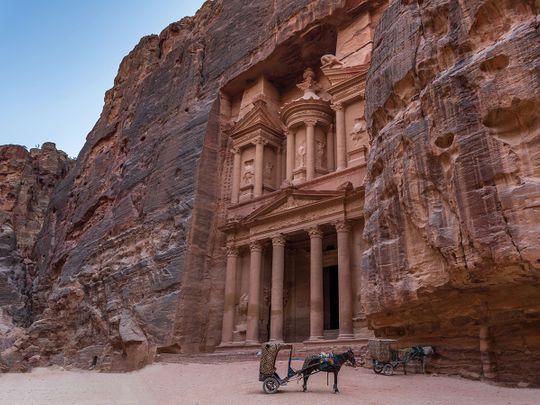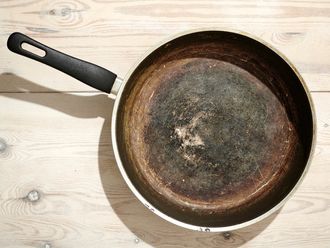
Welcome to the Rose City, located between the Red Sea and the Dead Sea, half-built and half-carved into rock. Have you guessed where you are, yet?
Click start to play today’s travel-themed Crossword. Find all the 26 cities!
Emerging from the red sandstone landscape of southwest Jordan is Petra, the country’s most-visited tourist attraction and one of the world’s most renowned archaeological sites. The rock-cut city was once an important crossroad between Arabia, Egypt and Syria-Phoenicia.
According to the United Nations Educational, Scientific and Cultural Organisation (Unesco), the city has been inhabited since prehistoric times. During the Hellenistic and Roman periods, it was a major hub for caravans transporting goods like incense from Arabia, silks from China, and spices from India. With such historical, architectural, and cultural significance, Petra was named one of the new seven wonders of the world in 2007.
While these facts about Petra are commonly known, there are others that may come as a surprise! For instance, according to the National Geographic’s website, archaeologists have explored only 15 per cent of Petra so far. Most of it lies hidden, waiting to be revealed.
Additionally, some Nabatean descendents still live in Petra’s caves. When Unesco declared Petra a World Heritage Site in 1985, the Jordanian government attempted to relocate the Bedouins to a village nearby, made just for them. But while most took the offer, a few decided to stay behind and still live there, to this day.
And if you recognise Petra by pictures of its Al-Khazneh (Treasury), its most famous rock-cut structure, it’s worth knowing that despite its name, the structure was never actually a treasury. Instead, it is believed to be a mausoleum for the Nabatean King Aretas IV. The reason for the name Al-Khazneh is because of the carved urn at the top of the temple. For centuries, the Bedouins believed the sandstone jar was full of gold and gemstones. Look closely, and you might spot the bullet holes made by a few daring Bedouins who tried to release the urn’s treasure!
Have you ever visited Petra? Play today’s Crossword and travel the world! Let us know if you enjoyed it at games@gulfnews.com.









